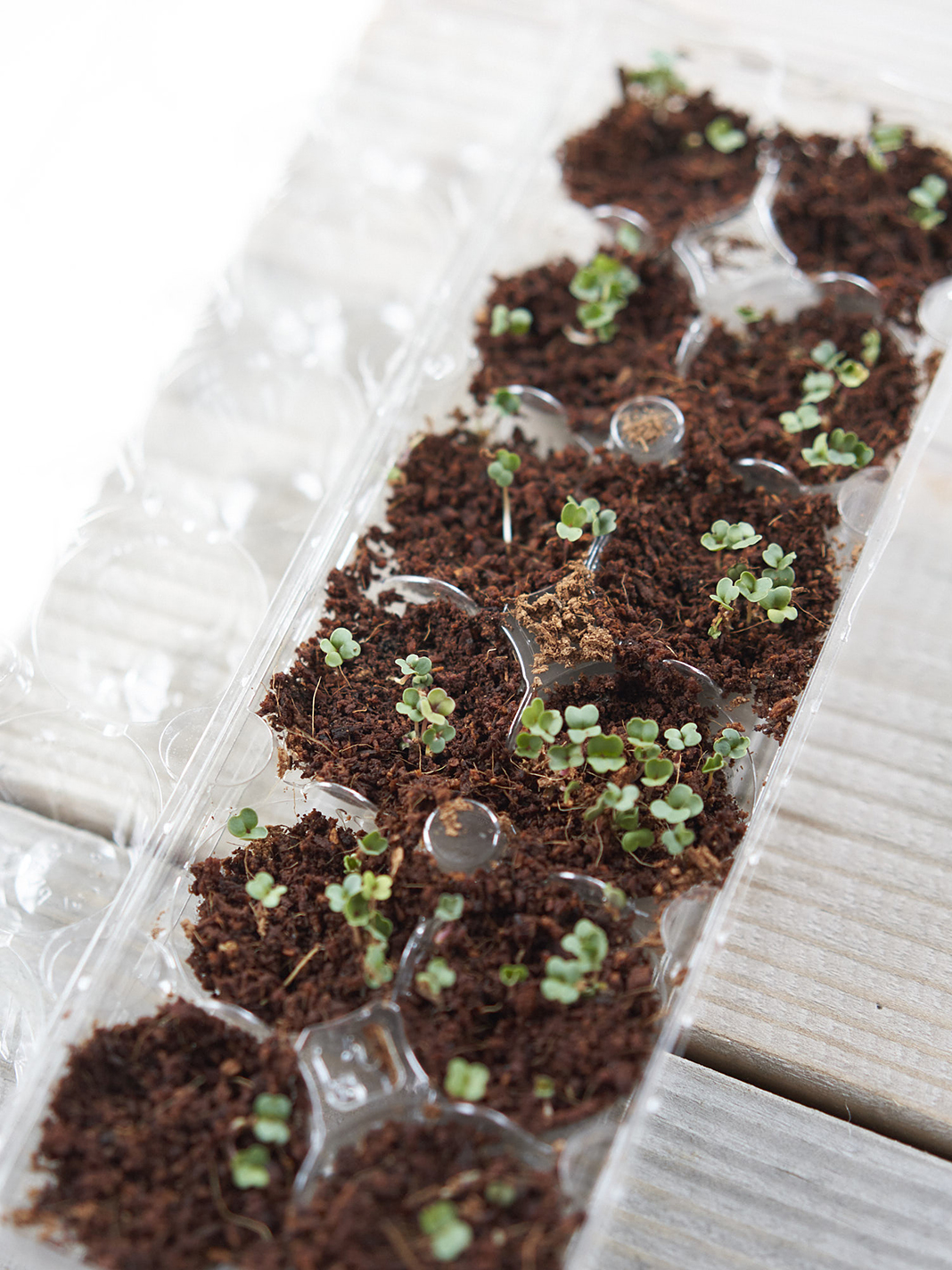We may earn revenue from the products available on this page and participate in affiliate programs.
Photographer Adrian Gaut and his family bought their house in the Hamptons in 2019, but it wasn’t until recently that they found the time to tackle a project they’d been dreaming of: building their own vegetable garden from scratch in the backyard.
Although this task can be intimidating—especially for a newbie gardener like Adrian—he’s found it to be interactive enough to keep his 7-year-old son, Mies, entertained. “He’s very excited about the process and doing almost everything himself,” says Adrian. “This is a really hands-on activity—it’s interesting for both of us.” Here’s how the family got started on their very own victory garden, even as novice green thumbs, and how you can do the same.
Plant Your Seeds
All you really need to start a garden is potting soil, seeds, and shallow containers—which can be egg cartons, Tupperware, or paper towel rolls cut up into smaller circles (Adrian and Mies used plastic egg crates). Plant whichever kind of seeds you’d like, but if you’re planning on keeping your garden indoors, instead of eventually moving the seedlings outside, it’s best to stick to herbs and small vegetables like lettuce, baby carrots, radishes, peppers, and onions. So far they have planted radishes, turnips, cucumbers, beans, tomatoes, shiso, Swiss chard, arugula, and cherry tomatoes. Newcomer to the gardening scene? Follow Ryan McCallister’s step-by-step seed-starting guide (you can trust him—he is Martha Stewart’s personal gardener) and you’ll be set.
Get Journaling

To channel your inner Bill Nye, add an extra layer to the project: Encourage kids to keep a notebook, observing how the seedlings grow and change over time. “We’re taking it day by day, measuring the spouts and drawing them,” says Adrian. “It’s exciting for Mies to make the connection between the seeds and what we eat, and to get involved with planning the garden.”
Bring It Outside
Adrian—with the help of Mies—also constructed raised garden beds with walls (to keep out any misbehaving deer). Once the seedlings have sprouted at least an inch or two, they’ll be ready to be transplanted outside, where they can get the space and sunlight they need to flourish. We see many garden-to-table meals in the family’s future.
More stories like this: Get a Custom Craft Supplies Care Package Delivered to Your Front Door You Don’t Have to Spend Hours Painting to Brighten Up a Room This British Designer Used Cardboard to Plan Her Perfect Backsplash
This story was originally published in April 2020. It has since been updated.
